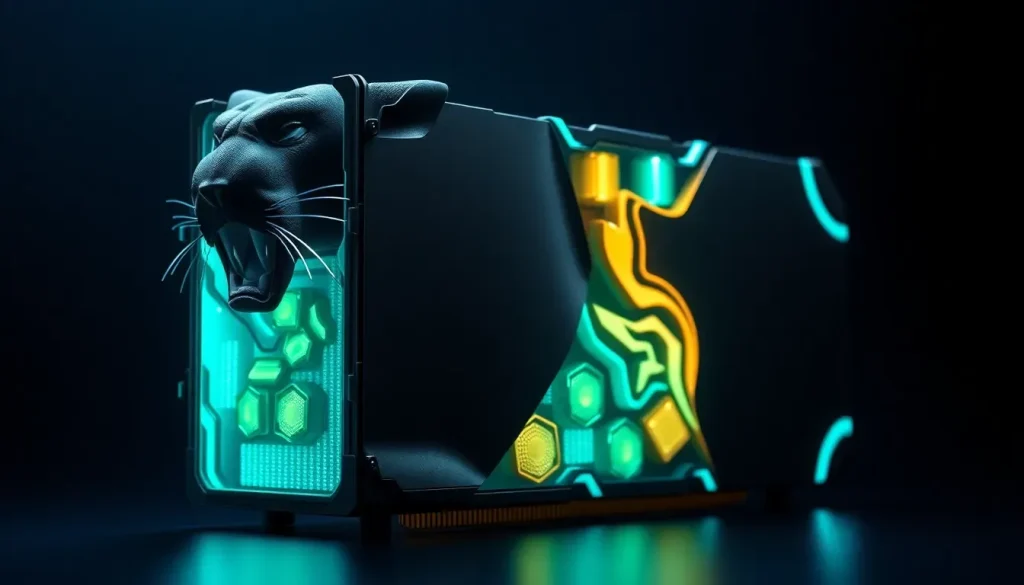Intel Panther Lake GPU with 12 Cores vs RTX 3050 and Radeon 890M

The unveiling of Intel's Panther Lake has stirred significant excitement in the tech community. After whispers of "Pathetic Lake" from OEMs circulated, Intel's latest slides showcased some promising advancements. Recent multitasking consumption tests revealed improvements in performance metrics by double digits. Now, all eyes are on their GPU offerings, particularly with the impressive potential of the Celestial architecture and Xe3 as the flagship model boasting 12 cores.
Initial expectations suggest that the performance of the Xe3 will surpass all AMD options, except for the Radeon 8060S, which has significantly higher power consumption. However, as we stand, no one possesses a Panther Lake laptop for real-world benchmarks, and beta testers are under stringent monitoring. Consequently, the data we have from Intel remains optimistic but should be viewed with caution. What we see is a glimpse into the capabilities of the Celestial architecture, particularly through insights from the Chinese tech community.
Intel's Data: Promising Early Comparisons and Insights
Intel's latest annals reveal a 50% increase in Xe Cores, which skews the perception of performance gains, yet the improvements seem sustainable. When we refer to "sustainability", we're addressing the so-called "vaporware" — the hype that often surrounds official slides from any manufacturer.
While the sheer number of cores is impressive, it’s essential to factor in the raised frequencies and the numerous architectural enhancements that contribute to the overall performance. Here are some key points to consider:
- The increase in Xe Cores directly correlates to performance gains.
- Architectural improvements play a critical role in overall efficiency.
- Projected performance metrics are based on extrapolated data from Intel.
These points should serve as the foundation for understanding the potential of Panther Lake. Recent comparisons from China have provided insightful projections, suggesting that the expected performance of the Xe3 could indeed be formidable.
Notably, with a thermal design power (TDP) of 45W, the hypothetical Core Ultra X9 388H could feature 4 P-Cores, 8 E-Cores, and 4 LPE-Cores, alongside 12 Xe3 Cores in its GPU configuration. Moreover, the support for LPDDR5X at 9,600 MT/s places this setup in a competitive stance.
An Architectural Leap Forward: Will We See a GPU with This Potential?
Understanding the anticipated leap in performance involves appreciating the structural advancements of Arc Celestial. Intel has entirely revamped the Xe3 architecture to provide a more cohesive and efficient experience across the board.
The new generation of Xe-Cores integrates:
- Eight XMX engines of 2,048 bits
- Eight vector engines of 512 bits
- A 33% increase in shared memory (L1/SLM)
- Support for 25% more threads
Additionally, the Ray Tracing unit has been enhanced with asynchronous dynamic management and a new BVH cache for improved ray intersection efficiency. The fixed GFX block now includes a new URB manager, enhanced anisotropic filtering, and improved stencil testing rates. This collective innovation within the Xe3 slices results in:
- Increased computational density
- Significant enhancements in ray tracing and advanced rendering
- Consistency in processing required for various caching mechanisms
Furthermore, Intel has introduced two key innovations focused on performance and efficiency. The first is the Intelligent Bias Control v3, a dynamic management system that employs a new speed-based algorithm for real-time adjustments among CPU, GPU, and firmware.
This smart control prioritizes execution on the E-Cores, utilizing an “E-cores first” scheduling scheme that enhances energy efficiency while minimizing latency. Another notable feature is the Precompiled Shader Distribution. This system collects and compiles shaders on Intel's servers, synchronizing them with client devices to reduce loading times and stuttering during initial launches.
Expected Performance: Intel Panther Lake and Its Xe3 GPU
From the data, it appears that Panther Lake, equipped with its iGPU Xe3 Celestial configuration of 12 cores, could attain approximately 6,000 points in Time Spy. This performance would place it above the RTX 3050 (6GB Max-Q at 60W), and the Radeon 890M, which has a lower core count and TDP.
In contrast, when evaluating the Strix Halo paired with the Ryzen AI Max+ 395 and its Radeon 8060S with 40 cores, it becomes evident that the Xe3 Celestial, despite having 70% fewer cores, achieves nearly half the score of this powerful iGPU. This stark contrast indicates a remarkable architectural leap.
When set against Lunar Lake’s Arc 140T, which operates with only 8 Xe Cores at 2.35 GHz and a much higher TDP, the Xe3 Celestial is projected to outperform it by approximately 47%. This performance leap suggests strong linear scalability, as Intel hinted a potential +50% increase compared to previous architectures.
Should these projections hold true, the Xe3 could redefine industry standards, positioning Intel as a formidable competitor in the GPU market. However, we must await comprehensive reviews and real-world testing to verify these optimistic forecasts.
For a visual summary of these developments, check out the following video:




Leave a Reply